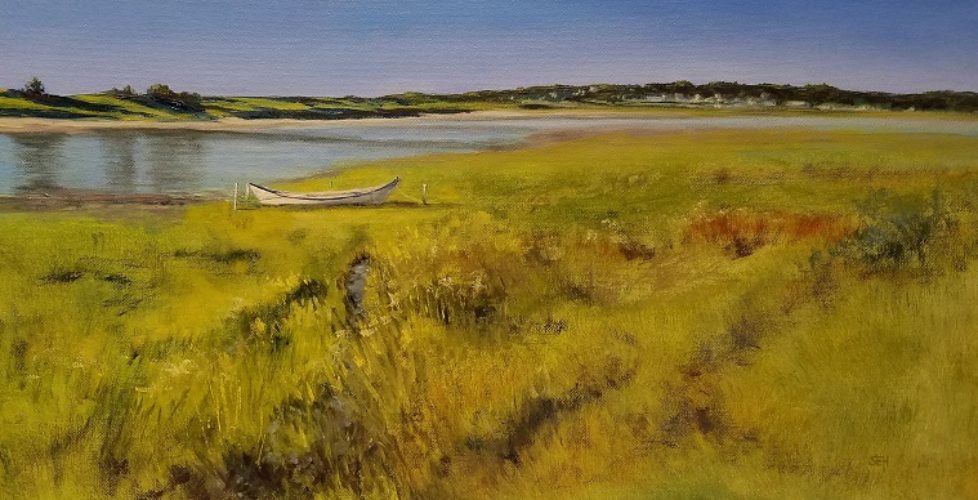A Written Art Lesson Part 6- Greens
A Written Art Lesson: Part 6
Today you will mix greens to create a field in the foreground. You may catch up with past lessons by visiting the Blog page on my website. You will find lessons about paints, supplies, and composition.
During our last session you were working on a landscape and had created your sky and mountains. The composition includes mountains with a tree in a field in the foreground. You now need to paint the field.
Because the mountains and sky are “cool” colors, why don’t you create a field of golds, yellows, and warm greens to add some contrast to your painting?
You will need to mix your greens from the colors previously squeezed out onto your palette. Use your palette knife to grab some Lemon Yellow and deposit it in a new pile a few inches below the master pile of it. Wipe your knife and grab some of the Yellow Ochre and make another pile of it under that master pile. You should now have two piles of Lemon Yellow and two piles of Yellow Ochre.
Wipe your knife and use it to grab some French Ultramarine Blue. Grab about a quarter as much as the new pile of Lemon Yellow. Add it to the new pile of Lemon Yellow and mix until it looks marbled. Wipe your knife and do the same with the Blue and the Yellow Ochre. You should have created two piles of different looking greens. You can divide those new greens and add more French Ultramarine Blue to each new pile to make darker greens. You should now have your two original yellows and four piles of greens.
Use the Grab and Go method to get some of one of the greens on the tip of your brush. You are going to use X-Strokes like you did when you painted the sky to cover the entire bottom of the canvas under the mountains. Except now you will be using your new greens as well as both the Lemon Yellow and the Yellow Ochre. You will use a medium sized flat brush. Wipe your brush and keep changing from one green or yellow to another. Paint little areas all over your field. Cover all the white of your canvas. The field should be completely painted with your greens and yellow.
Now wipe your brush. Do not grab more paint. The grass in the far distance near the mountains shouldn’t be tall and defined. Use the flat side of your brush to blend your X-Strokes flatter back there. Move about halfway down your field. Then hold your brush like a pencil and use the thin, flat edge of the brush to make small, skinny strokes to look like tall grass. Just drag the brush upward through the paint you’ve already applied. Continue to move lower so that the grass at the bottom of your canvas looks “closer”. The lower you get, the taller you should make your grass. Wipe your brush often to keep the edge thin and flat.
You need to get your tree painted while your field, mountains, and sky are still wet.
I’ll help you with that during your next “Written Art Lesson”!


